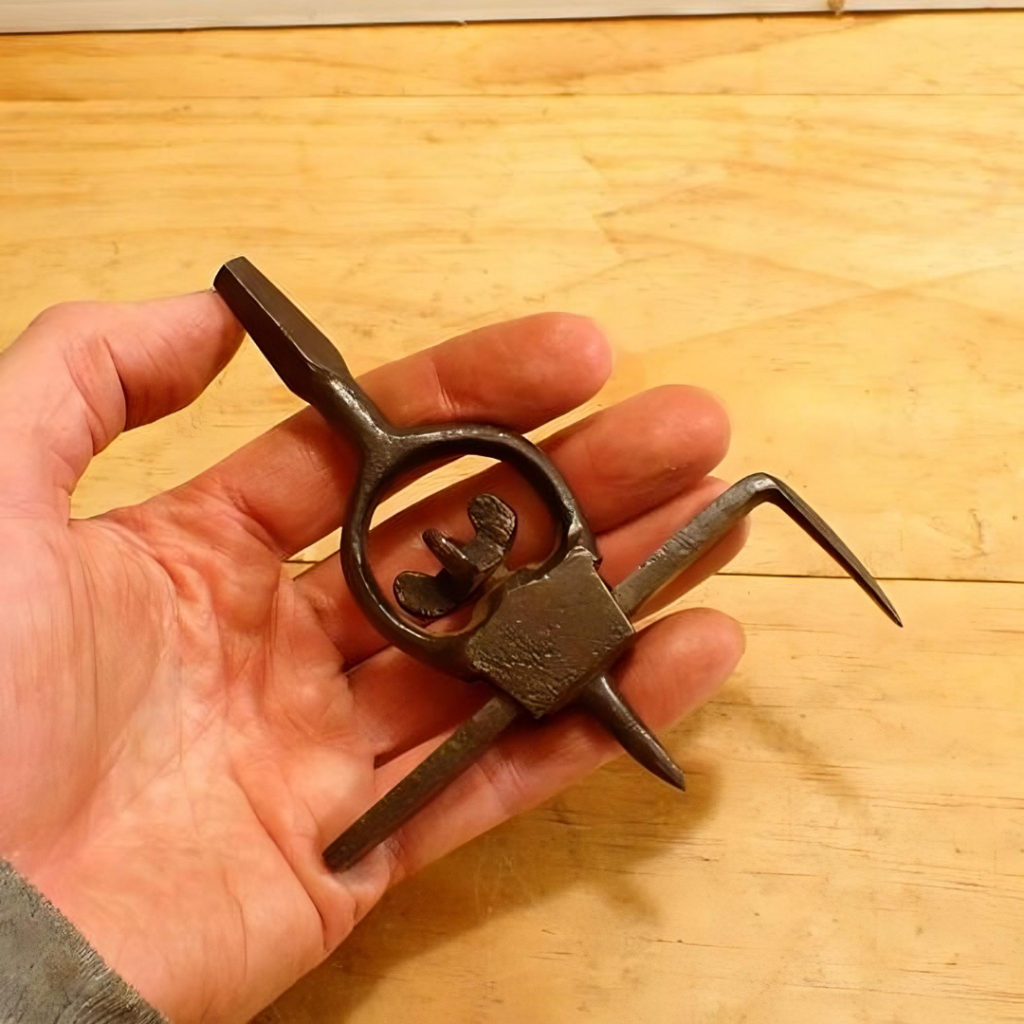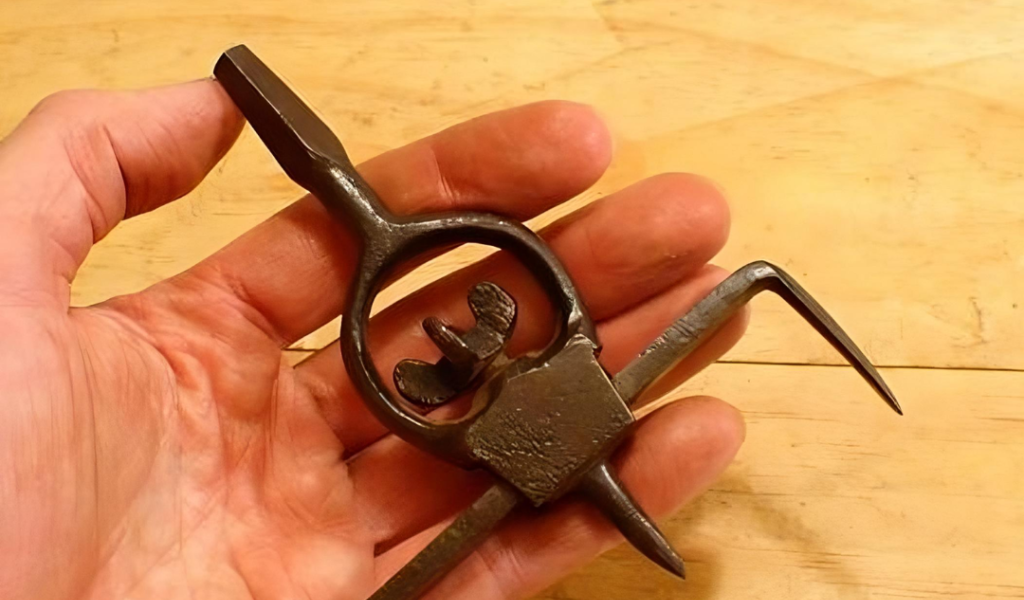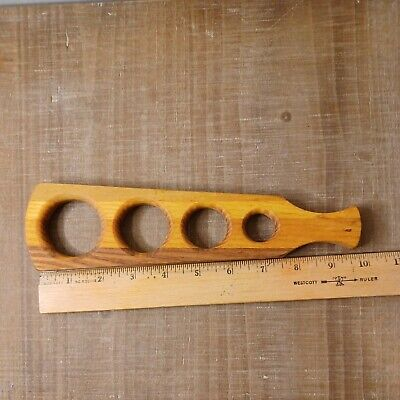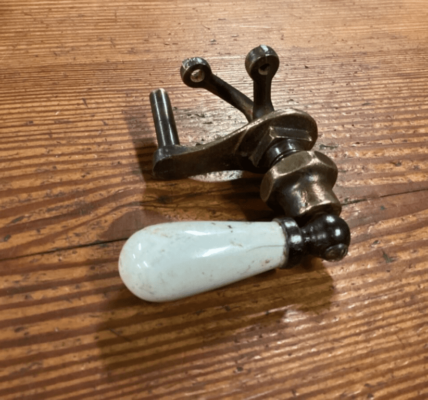The world of toolmaking has undergone significant transformation over the past few centuries, but one tool from the late 19th and early 20th centuries still holds a special place in the hearts of collectors and craftsmen—the vintage washer cutter. This specialized tool, designed for use with a brace and bit, is a symbol of the ingenuity, precision, and craftsmanship that defined the industrial era. Though largely overshadowed by modern, powered tools, the vintage washer cutter remains a testament to the brilliance of early toolmakers who understood the importance of quality, efficiency, and adaptability.
Let’s explore the rich history, design, and legacy of the washer cutter, a tool that helped shape the evolution of modern circular cutting tools.
The Birth of the Washer Cutter: A Product of Industrial Innovation

The washer cutter emerged during a period of rapid industrialization in the late 19th and early 20th centuries. This era was marked by significant advancements in toolmaking, as craftsmen sought ways to improve efficiency, precision, and functionality in their workshops. As a result, tools like the washer cutter were developed with a specific purpose in mind: to create precise circular cutouts, or washers, from a variety of materials such as wood, metal, leather, and rubber.
What made the washer cutter particularly innovative was its adjustable arms, which allowed users to change the diameter of the cutout easily. This level of versatility made it an essential tool in both small workshops and larger factories, where precision and adaptability were paramount. It allowed craftsmen to execute precise cuts without relying on powered machinery, making the washer cutter a true standout among hand tools.
The Washer Cutter and Brace and Bit: A Perfect Pairing
One of the most fascinating aspects of the washer cutter is its integration with the brace and bit, a common hand-powered drill. The brace and bit was already a staple tool in many workshops, prized for its ability to deliver consistent torque when drilling holes. By attaching the washer cutter to the brace, craftsmen could create perfect circular cutouts without the need for electricity or complex machinery.
This combination of tools highlights the thoughtful design and ingenuity of the period. The washer cutter, paired with a brace and bit, exemplifies how toolmakers of the time understood the needs of craftsmen and designed versatile tools that could accomplish precise work with minimal effort. The simplicity and efficiency of this setup made it a go-to solution for countless trades, from carpenters and machinists to leather workers and rubber fabricators.
Craftsmanship and Durability: Built to Last
The vintage washer cutter, like many tools from its era, was crafted with an emphasis on durability and long-term use. Made from robust materials such as hardened steel, the tool was built to withstand the wear and tear of daily work in demanding environments. It wasn’t uncommon for these tools to last decades, passed down from one generation of craftsmen to the next.
This focus on durability speaks to the mindset of early toolmakers, who prioritized creating tools that not only performed their intended function but also stood the test of time. Today, many of these vintage washer cutters remain in working condition, a testament to the quality and craftsmanship that went into their production. Modern craftsmen and collectors alike admire these tools for their blend of functionality and artistry.
The Legacy of the Washer Cutter: Shaping Modern Toolmaking
Though modern technology has advanced considerably since the introduction of the washer cutter, its legacy continues to influence today’s circular cutting tools. While powered tools and CNC machines have replaced many manual processes, the principles behind the washer cutter—precision, versatility, and efficiency—remain relevant.
In fact, the washer cutter’s ability to deliver precise results without the need for electricity has inspired modern toolmakers to develop more user-friendly, efficient hand tools. The washer cutter serves as a bridge between traditional craftsmanship and modern engineering, embodying the spirit of innovation that continues to drive tool development.
Collector’s Item: The Vintage Washer Cutter as a Piece of History

For tool collectors and enthusiasts, the vintage washer cutter holds significant historical value. These tools are not only functional but also represent an era of craftsmanship that many consider a golden age in toolmaking. Collectors appreciate the washer cutter for its intricate design, craftsmanship, and the role it played in advancing the field of manual toolmaking.
Owning a vintage washer cutter is like owning a piece of history—a tangible link to the tradesmen and toolmakers of the past who relied on these tools to build the world around them. Whether displayed in a collection or still used in the workshop, the washer cutter remains a cherished symbol of quality, precision, and durability.
Inspiring Modern Craftsmanship
While powered tools have largely taken over in many industries, the washer cutter continues to inspire modern craftsmen who value the artistry of hand tools. Its design and functionality remind us of a time when every cut and every detail mattered. Today, toolmakers and craftsmen alike look back at tools like the washer cutter for inspiration, drawing on the precision and durability of these vintage tools as they create modern innovations.
As we continue to push the boundaries of toolmaking, it’s important to recognize the contributions of tools like the washer cutter. These tools laid the foundation for the high standards of precision and craftsmanship that continue to define the industry today.
Conclusion: The Enduring Legacy of the Vintage Washer Cutter
The vintage washer cutter is more than just a tool; it’s a symbol of an era defined by innovation, precision, and quality craftsmanship. From its origins in the late 19th century to its lasting impact on modern toolmaking, the washer cutter stands as a testament to the ingenuity of early toolmakers. Its ability to create precise, adjustable circular cutouts revolutionized workshops and factories, allowing craftsmen to execute their work with unmatched accuracy.
Today, collectors and craftsmen alike continue to value these vintage tools, not only for their historical significance but for the inspiration they provide. The washer cutter reminds us of the importance of craftsmanship in an age where mass production has often overshadowed individual artistry. As a bridge between traditional and modern tools, the vintage washer cutter remains a shining example of how thoughtful design and precision can stand the test of time.




